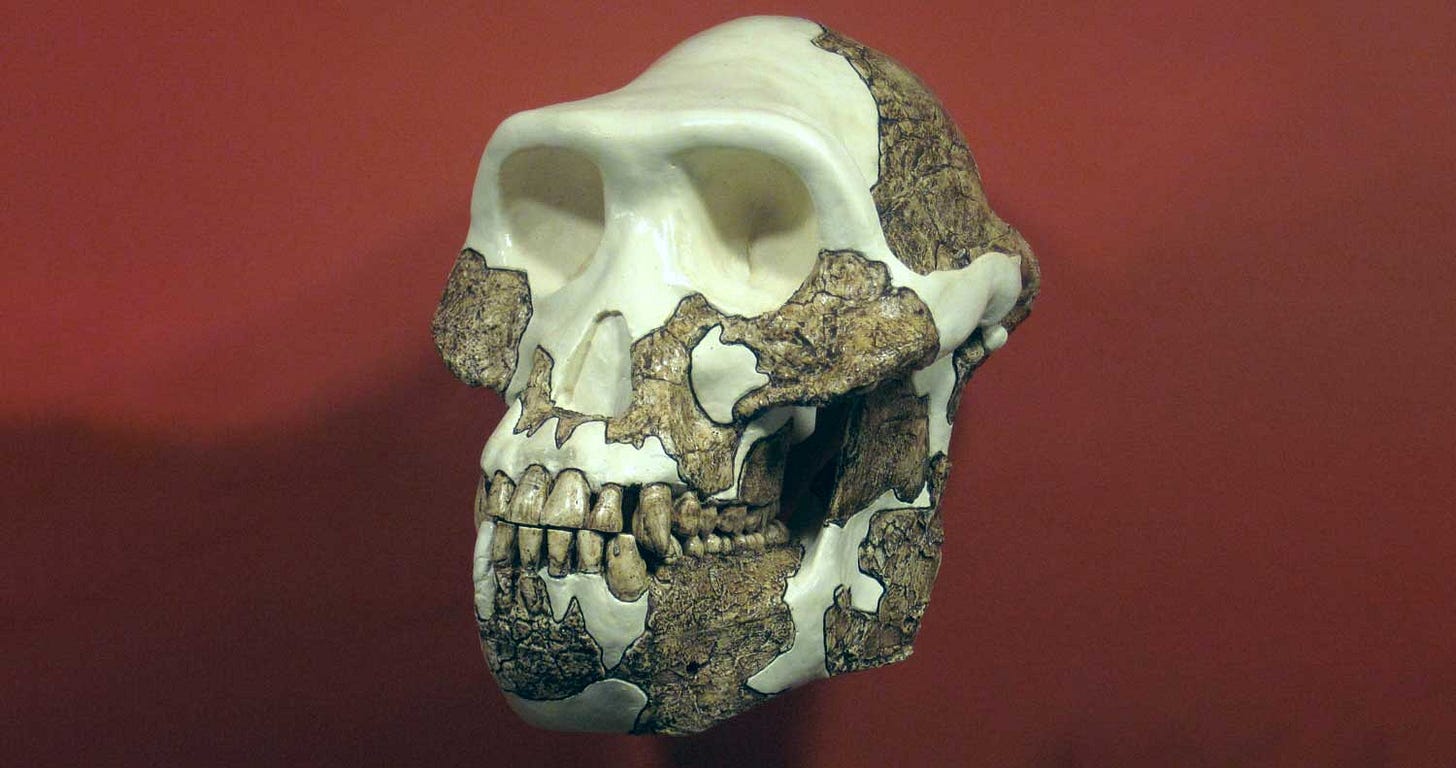How many students in paleoanthropology can see casts of Australopithecus afarensis?
The real problem with a lack of data access is that 50 years of the fossil record is invisible to many students in the field.

The other day I happened back upon an old post from 2005, the first full year of the blog: “NSF and data access”. The post recounts my perspective on the problems with data access back in the first decade of this century.
That post was written a couple of years after the famous “Glasnost” article in Science. That news article, by Ann Gibbons, reviewed some scientists’ perspectives on access to fossil evidence. That would prove to be an important article in documenting a phase of history.
But as I reflected at the time, the fact that scientists cannot examine recently-discovered fossils is a comparatively minor inconvenience.
The real problem is that twenty to thirty years after many fossils are uncovered, there is no cast availability, little public data access, few financial accommodations to make such access possible. Specialists like me often find ways around these barriers. But I do not think it would be overstating the problem to suggest that perhaps half the people teaching human evolution in four-year universities have never touched a cast of a Hadar fossil. I would be delighted to be proved wrong, but I don't think I am. Our field is educating students into a world in which A. afarensis is unknown in the laboratory and poorly represented in our textbooks. I'm not talking about new specimens, here, I'm talking about fossils that were found in the mid-1970's and monographed in 1982. Nor is this problem limited to early hominids. What proportion of people teaching about the modern human origins problem do you suppose have seen a cast of any "early modern" fossil other than Skhul 5?
I’ve said this quite a lot over the years. I still believe that Au. afarensis is not known in the laboratory for most instructors of biological anthropology at universities and colleges in the U.S. Indeed, I would say that a good fraction of instructors of specialty courses in paleoanthropology have not studied casts of Au. afarensis beyond LH 2 and LH 4 from Laetoli, Tanzania.
I was especially struck in 2012, when I organized the plenary session at the AAPA meetings, at which many anthropologists saw casts of fossil hominins that they had never seen before. The University of Oregon assisted by providing a second-generation cast of the Lucy skeleton. I was amazed at how many professional anthropologists clustered around the table with this cast skeleton. Many had seen a cast of Lucy mounted in a museum, but had never had the opportunity to handle parts of it, nearly forty years after its discovery.
My post from 2005 centered around the announcement of the new data access requirements for NSF grants in the physical anthropology program. I was hopeful, and reviewed several ways in which the official policy might make a difference.
But I did think that there was a real risk that the policy would give rise to extra paperwork for grant applicants without actually requiring any real changes in the way paleoanthropologists did things.
If the new policy is to be a success, then the proof of it cannot wait for ten to thirty years. It needs teeth. It needs two or three high-profile grants to be declined because of data access issues. And it needs those cases to be made public, so that everyone can have confidence in the openness of the process. This doesn't mean that the names of the applicants and their alleged sharing violations should be dragged through the press. It does mean that NSF should publish the number of grants (and their proposed funding amounts) declined for failings in the data access plan.
There has been positive progress. The data archive at Duke University, Morphosource, initially funded by NSF, has become an important data repository for surface scan data from some recent fossil hominin discoveries. None of those hominin fossil discoveries were themselves funded under NSF grants, but NSF funding did go toward recovery of a number of Turkana Basin hominin fossil specimens, for which photogrammetric models are available under the AfricanFossils.org initiative.
A cultural change is underway in data access and accessibility of 3-D models and casts of fossil hominin specimens. I am much more hopeful about the future of data access now than I was in 2005.
With fossils like those of Australopithecus afarensis, there are very specific heritage issues that pertain to the country of origin and limit scientists’ ability to share information about their fossils.
For example, researchers who work in Ethiopia have told me that only a single cast of any fossil specimen is allowed to be exported from the country by the discoverer. Obviously that requirement severely limits information exchange about such discoveries among professional anthropologists, much less the public. It also severely reduces the broader impact of fossil discoveries, unfortunately, because of the extreme difficulty of including them in comparative analysis.
I will be reflecting on these issues much more over the coming months. We are on the verge of some real changes in paleoanthropology’s profile in science and its impact on people’s awareness of science. A critical mass of anthropologists recognize the importance of working together on issues of access and data replicability.



